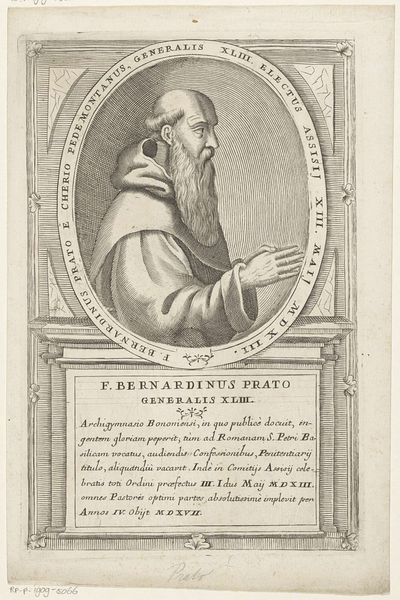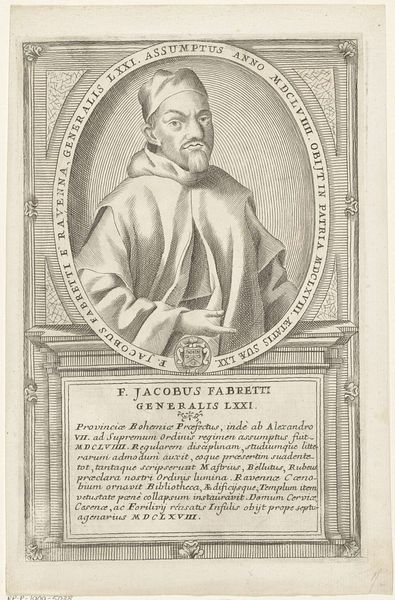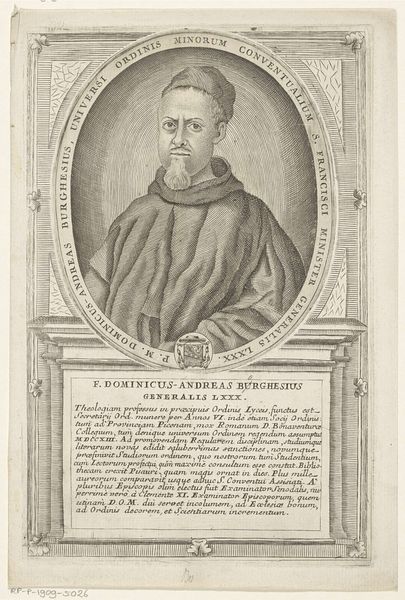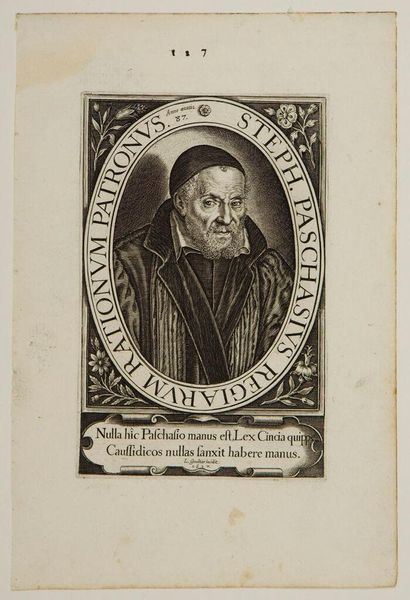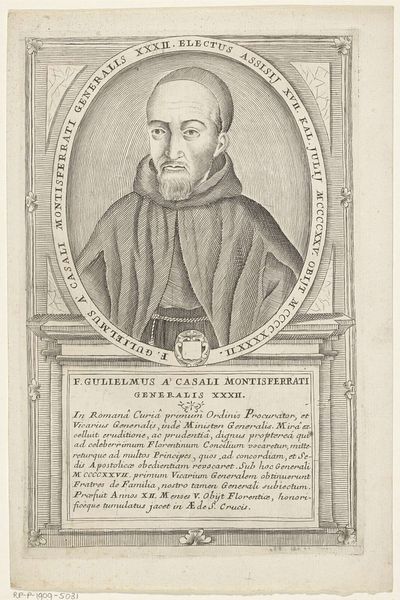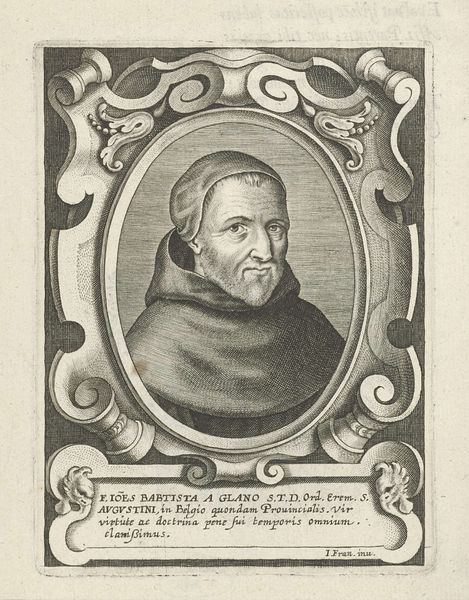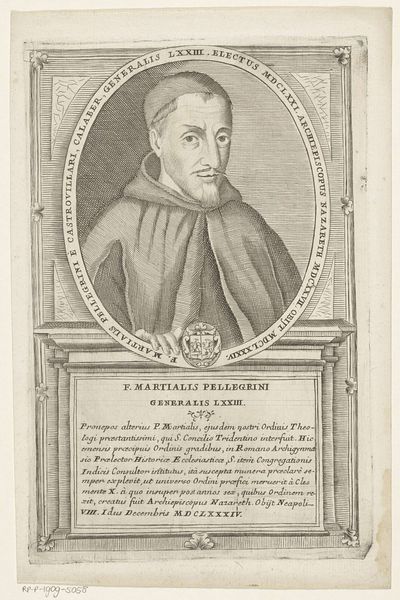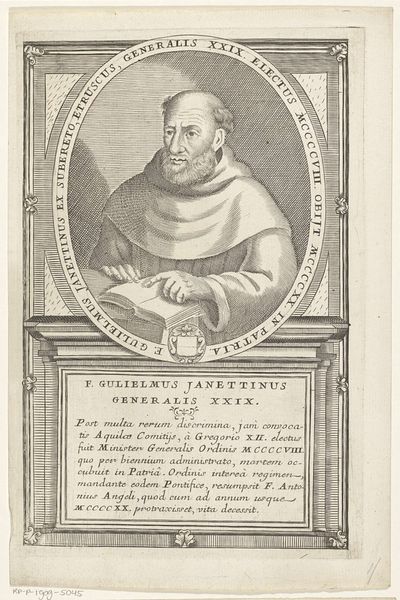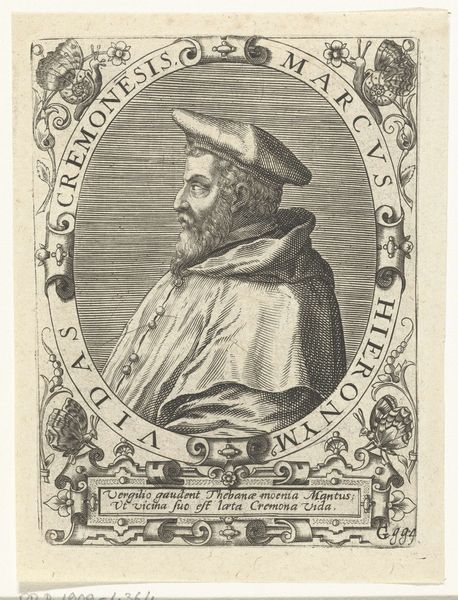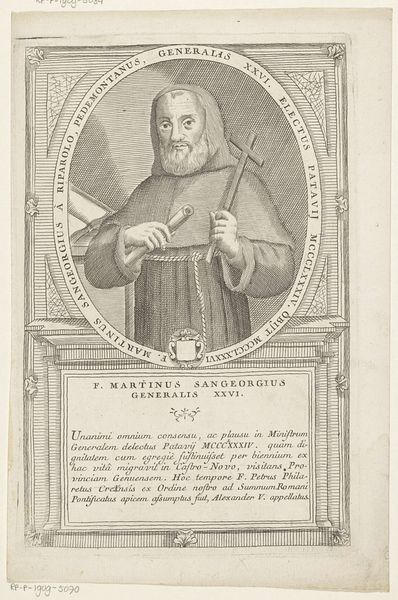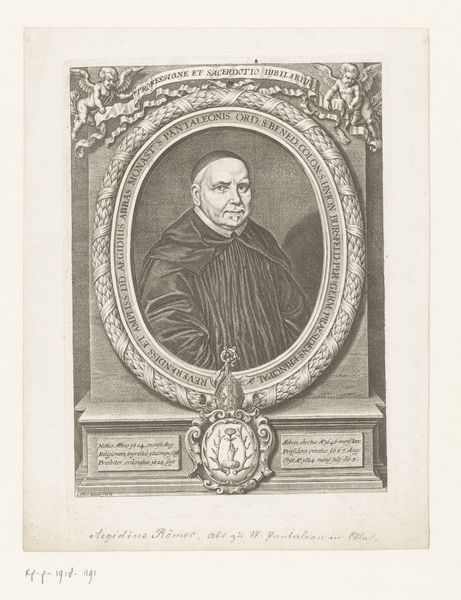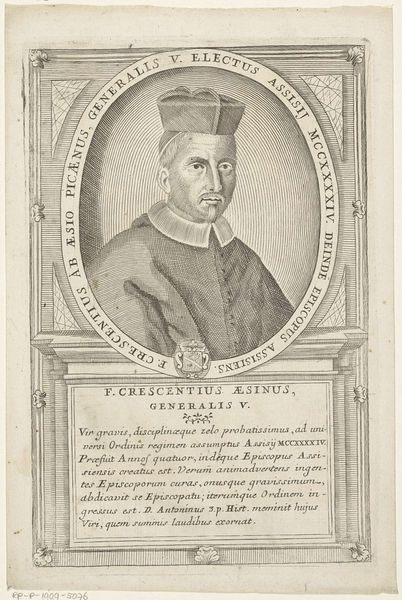
Portret van Angel Cristofori del Toscano, 34ste Minister Generaal van de franciscaner orde 1710 - 1738
0:00
0:00
print, engraving
#
portrait
#
aged paper
#
toned paper
#
baroque
#
parchment
# print
#
old engraving style
#
personal sketchbook
#
old-timey
#
history-painting
#
engraving
Dimensions: height 250 mm, width 164 mm
Copyright: Rijks Museum: Open Domain
Curator: This engraving, likely created between 1710 and 1738, is titled "Portret van Angel Cristofori del Toscano, 34ste Minister Generaal van de franciscaner orde." It depicts a figure from the Franciscan order. What strikes you immediately? Editor: The composition feels inherently hierarchical. The oval portrait dominates, surrounded by text almost like a support structure. The gaze directed upwards, coupled with those prayerful hands, certainly positions him within a specific spiritual context. Curator: Precisely. The formal structure reinforces his elevated status. Note how the artist utilizes line work; crisp, controlled lines define the figure and his garb, while a more textural approach is applied to his face, indicating age and perhaps wisdom. The use of chiaroscuro adds depth. Editor: But that elevation comes at a cost. He is presented within this rigid framework, quite literally confined by text that seems to define him—his name, titles, achievements. This feels indicative of how institutions can both celebrate and restrict individuals, particularly religious ones, within very particular ideologies. Curator: An astute point. And what about the details, like the coat of arms below the oval? These visual markers were meticulously crafted to solidify the man’s significance. This attention to detail echoes Baroque aesthetics, which emphasizes grandeur and authority. Editor: True, but let's consider that such emphasis often came with a deliberate exclusion of those outside such structures. Was Toscano a force for unity or did he embody power dynamics that entrenched further marginalization and suppression, during a time when the Church was actively persecuting folks, particularly heretics and suspected witches? What kind of influence did this individual wield, and on whose backs was that power built? Curator: From a formal standpoint, one cannot deny the effectiveness of this piece. It is undoubtedly well-executed, and serves its purpose effectively as a declaration of authority. Editor: Yet it's important not to ignore the broader picture, to delve into the subject’s impact beyond artistic appreciation and assess how his life impacted those outside his carefully constructed narrative. Art is powerful but also situated; considering whose voices it amplifies, and perhaps suppresses, adds necessary depth to how we encounter such pieces. Curator: A vital perspective, highlighting the responsibility art bears towards shaping wider socio-cultural narratives, indeed! Thank you for sharing these contextual layers. Editor: My pleasure; such layers can only amplify how an artwork’s meaning resonates today, and perhaps challenge conventional appreciations.
Comments
No comments
Be the first to comment and join the conversation on the ultimate creative platform.

